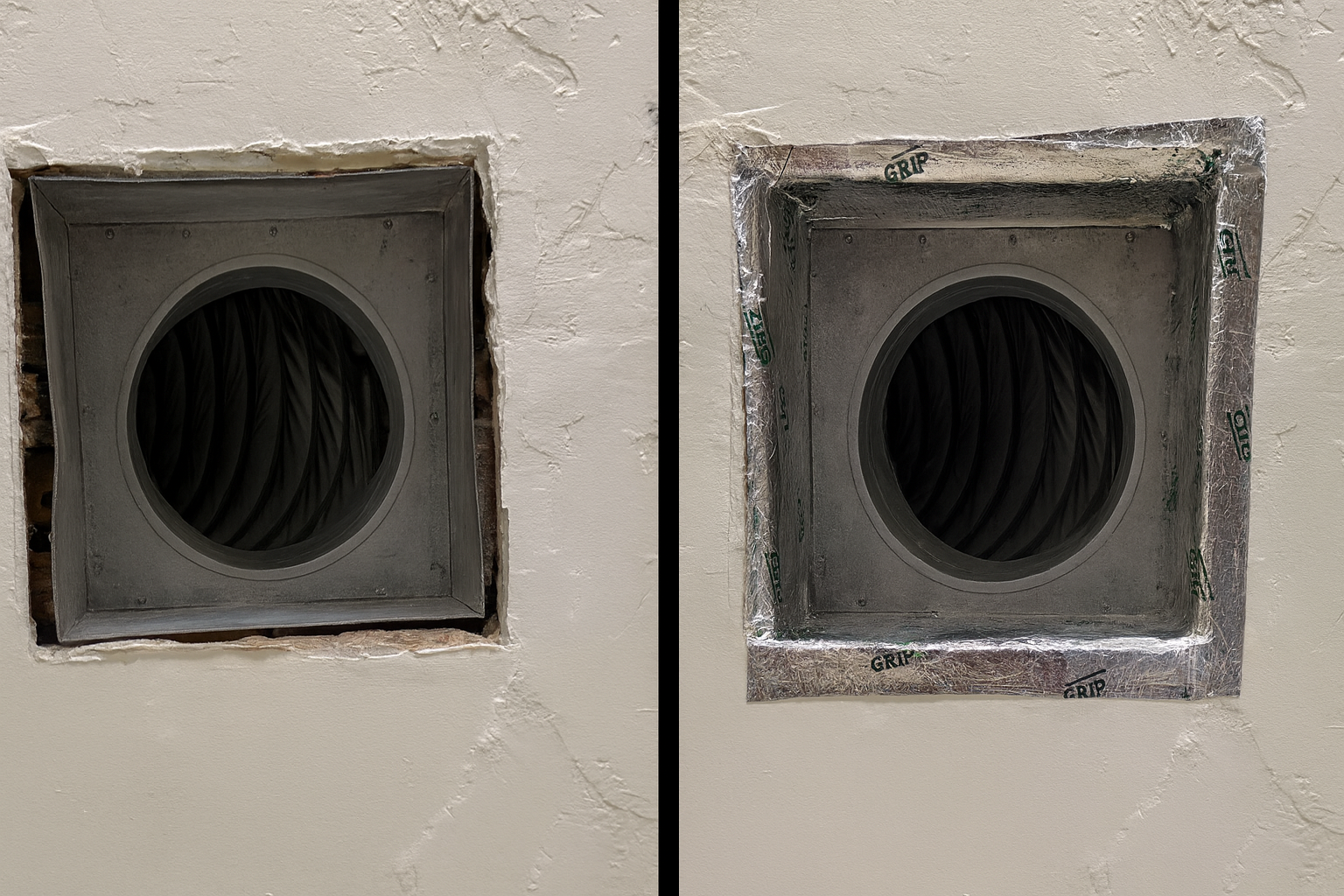Leaky HVAC Register Boots: The Hidden Air Leak in Your Home
Most homeowners have no idea they’re losing air around their vents.
That’s because the vent cover hides the problem completely—those gaps between the metal boot (the box your vent cover screws into) and the wall, floor, or ceiling aren’t visible until the cover is removed.
Today, in most California cities, this is exactly the kind of thing the Title 24 energy code is designed to catch. Every newly installed duct system must pass a third-party pressure test, and unsealed register boots are one of the most common reasons systems fail.
But older homes built before these requirements? Back then, no one was checking. Which means thousands of houses are quietly leaking air and pulling in dust every time the HVAC kicks on.
Why Those Gaps Matter
When a register boot isn’t sealed to the wall or floor, it creates an open path between your living space and the wall cavity, attic, or crawlspace.
That’s like leaving a window cracked open year-round—but instead of fresh outdoor air, you’re pulling in dusty, unfiltered air from hidden parts of your home.
Two main issues happen here:
1. Energy Efficiency Loss
Conditioned air can escape into wall cavities or crawlspaces before it even reaches the room.
The HVAC system works harder to make up for the loss, which can drive up energy bills.
In heating season, you’re basically paying to warm the inside of your walls.
2. Air Quality & Odor Problems
Negative pressure inside the home (common when the HVAC is running) can pull air in through those gaps.
That air often carries dust, insulation fibers, musty odors, or even garage fumes.
Over time, these particles circulate through your home’s air, making allergy or asthma symptoms worse.
How to Seal the Gap the Right Way
Fixing the problem isn’t complicated, but it’s important to do it right so the repair lasts.
Step 1 – Caulking the Gap
Caulking is usually needed when the gap between the register boot and the surrounding surface is large enough that the boot has little structural support. By filling that space, you stabilize the boot so the foil grip applied in the next step can adhere properly and form a lasting seal. In some cases—when the gap is small and the boot is already well-supported—this step may not be necessary.
Step 2 – Reinforcing with Foil Grip Tape
After the caulk (if used) cures, cover the seam with foil grip tape—not standard foil tape. Here’s why foil grip is the pro’s choice:
Temperature Resistance – It holds up against both winter heat and summer cooling without drying out or peeling.
Stronger Adhesive – Foil grip sticks even to slightly irregular surfaces and stays put for years.
Multi-Layer Durability – Unlike thin foil tape that tears easily, foil grip’s layered design resists punctures and holds its shape.
This one-two punch—caulk for structure and air sealing (when needed), foil grip for long-term reinforcement—ensures you won’t be redoing the job in a couple of years.
The Bottom Line
A loose register boot is more than a cosmetic issue—it’s a hidden energy drain and a direct pathway for dust and odors to enter your home.
Sealing it properly can improve comfort, lower energy bills, and keep your indoor air cleaner.
If you’re not comfortable doing it yourself, ask your HVAC technician to inspect all register boots during your next service visit.
You might be surprised how many need attention.



